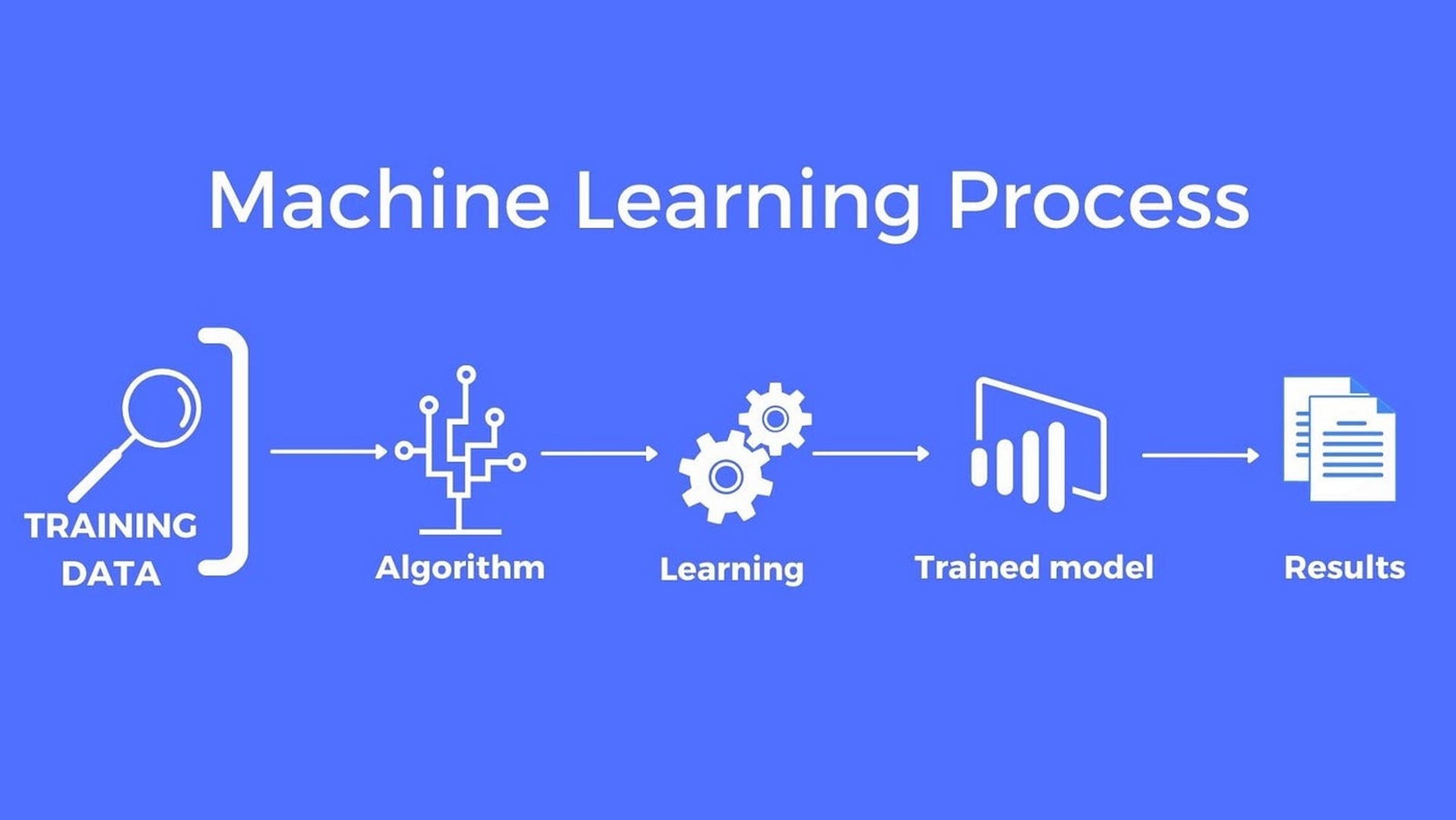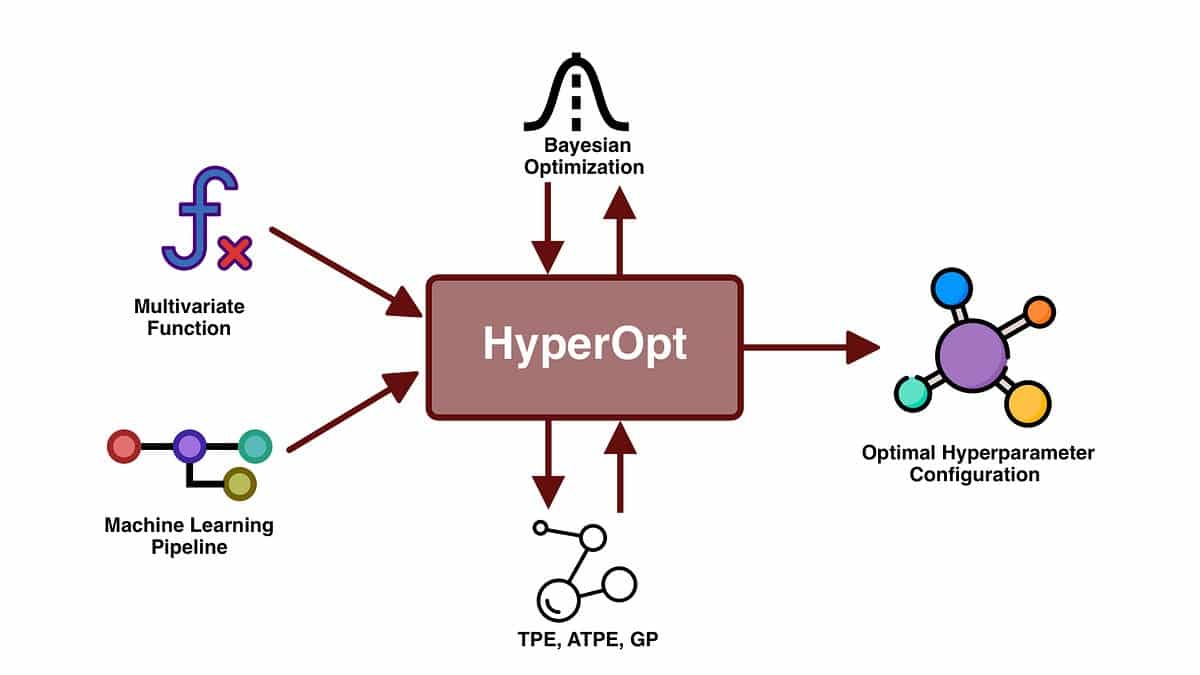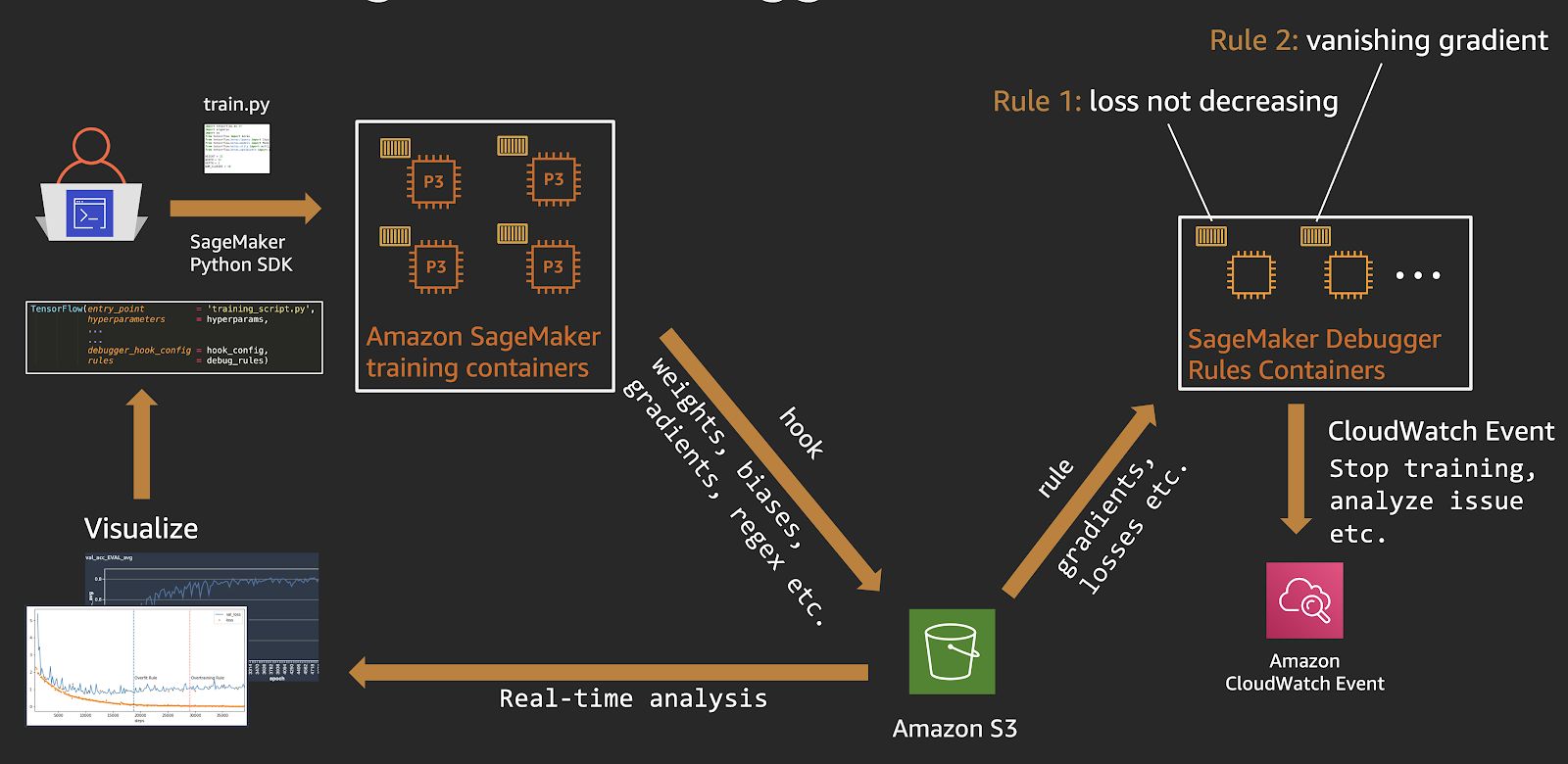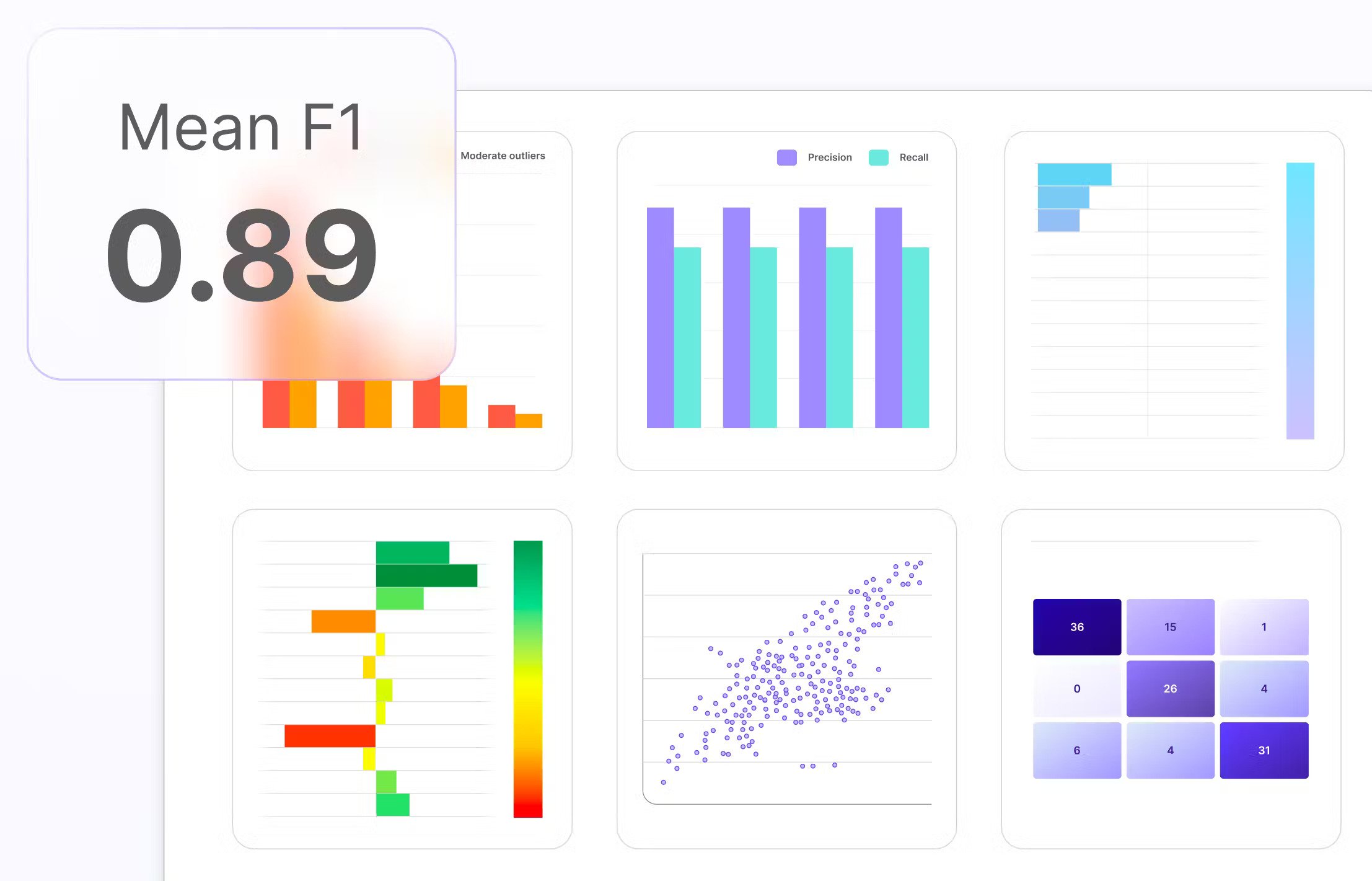Introduction
Machine learning has become an integral part of many industries, from healthcare to finance, and from retail to cybersecurity. As businesses strive to leverage the power of machine learning, it is crucial to evaluate the performance of the models built. Evaluating model performance gives insights into how effectively the model is making predictions and helps to identify any areas of improvement.
When assessing the performance of a machine learning model, several metrics come into play. These metrics depend on the type of problem being solved – whether it is a classification problem, where the model predicts a category, or a regression problem, where the model predicts a continuous value.
In this article, we will explore the various metrics used to evaluate the performance of machine learning models. We will delve into metrics specifically designed for classification models and regression models, showcasing their significance in quantifying the model’s accuracy and precision.
Furthermore, we will discuss the concepts of overfitting and underfitting, which are common pitfalls in model development. These phenomena occur when a model performs exceptionally well on the training data but struggles to generalize to new, unseen data. We will analyze techniques such as cross-validation, which can help mitigate the risk of overfitting and underfitting.
By the end of this article, you will have a comprehensive understanding of the different evaluation metrics for machine learning models, enabling you to assess the performance of your models more effectively and make informed decisions regarding model selection and improvement.
Data Splitting
One of the fundamental steps in evaluating the performance of a machine learning model is to split the available data into training and testing sets. This division allows us to train the model on a subset of the data and assess its performance on unseen data.
The commonly used approach is the train-test split, where a percentage of the data is randomly selected for training the model, and the remaining portion is used for testing. For instance, an 80/20 split means that 80% of the data will be used for training, and the remaining 20% will be used for testing.
This train-test split helps evaluate how well the model generalizes to new data. It provides an estimate of how the model is likely to perform in real-world scenarios where it encounters unseen instances.
However, relying solely on a single train-test split may introduce bias into our evaluation. To overcome this limitation, we can employ a more robust technique called cross-validation.
Cross-validation involves repeatedly dividing the data into different train-test splits. Each split involves selecting a portion of the data for training and evaluating the model on the remaining data. This process is typically performed multiple times, with different splits each time, and the results are averaged to provide a more reliable estimate of the model’s performance.
An important concept within cross-validation is the k-fold cross-validation. In k-fold cross-validation, the data is divided into k equal-sized subsets called folds. The model is trained and tested k times, each time using a different fold as the testing set and the remaining folds as the training set. The results from each fold are then averaged to obtain the final performance metric.
Another variant of k-fold cross-validation is stratified k-fold cross-validation. This method ensures that the distribution of the target variable is maintained across the folds, reducing the risk of imbalanced or biased splits.
Lastly, we have the hold-out validation approach, where a separate validation set is created in addition to the training and testing sets. The validation set is used to tune the model’s hyperparameters and make decisions about model selection, while the testing set remains untouched until the final evaluation.
By employing data splitting techniques like train-test split, cross-validation, and hold-out validation, we can obtain a comprehensive evaluation of our machine learning models, ensuring their performance is assessed on diverse data and minimizing the risk of biased evaluations.
Metrics for Classification Models
When working with classification models, which aim to predict categorical outcomes, various metrics are used to assess their performance. These metrics provide insights into the model’s accuracy, precision, recall, and their overall effectiveness in classifying instances.
One of the simplest and most commonly used metrics is accuracy. It measures the proportion of correct predictions made by the model. While accuracy is easy to interpret, it might not be the most suitable metric when dealing with imbalanced datasets, where the number of instances in each class is significantly different.
Precision is a metric that focuses on the proportion of true positive predictions out of the total positive predictions made by the model. It is particularly useful when the cost of false positives is high. For example, in a spam detection system, precision indicates the percentage of correctly classified spam emails out of all the emails classified as spam.
Recall, also known as sensitivity or true positive rate, measures the proportion of true positive predictions captured by the model out of the total actual positive instances. Recall is crucial when the cost of false negatives is high. For instance, in a medical diagnosis system, recall indicates the percentage of correctly identified positive cases out of all the actual positive cases.
The F1-score is a metric that combines precision and recall into a single value. It provides a balanced measure by calculating the harmonic mean of precision and recall. The F1-score is useful when there is an imbalance between precision and recall, and we want to assess the overall performance of the model.
In addition to these metrics, the Receiver Operating Characteristic (ROC) curve is commonly used to evaluate classification models. The ROC curve illustrates the trade-off between the true positive rate (TPR) and the false positive rate (FPR) at various classification thresholds. It helps choose an appropriate threshold and gives an overview of the model’s performance across different operating points.
Another metric derived from the ROC curve is the Area Under the ROC Curve (AUC-ROC) score. It represents the overall performance of the model, where an AUC-ROC score of 1 indicates a perfect classification, and a score of 0.5 indicates a random classification. The AUC-ROC score provides a robust measure of performance even when dealing with imbalanced datasets.
By utilizing these metrics, we can comprehensively evaluate the performance of classification models and gain insights into their accuracy, precision, recall, and their ability to differentiate between different classes. These metrics, along with techniques like cross-validation, help us make informed decisions about model selection and refinement.
Accuracy
Accuracy is one of the most commonly used metrics to evaluate the performance of classification models. It measures the proportion of correct predictions made by the model, providing a general sense of its accuracy.
Accuracy is calculated by dividing the number of correct predictions by the total number of predictions, and it is typically expressed as a percentage. For example, if a model correctly predicts 80 out of 100 instances, the accuracy would be 80%.
While accuracy is a straightforward metric to interpret, it may not always be the most suitable metric, especially when dealing with imbalanced datasets. An imbalanced dataset occurs when the number of instances in each class is significantly different. In such cases, a high accuracy score might be misleading. For instance, if a dataset has 95% of instances belonging to one class and only 5% belonging to another class, a model that simply predicts the majority class all the time would achieve 95% accuracy, but it would fail to detect the minority class effectively.
Therefore, accuracy should be used cautiously and in conjunction with other metrics, especially when dealing with imbalanced datasets. It is essential to consider the distribution of classes in the dataset and the specific goals of the classification problem.
For example, in fraud detection tasks, where the occurrence of fraud cases is relatively rare, accuracy alone might not be a reliable measure. In such cases, metrics like precision and recall become more valuable. Precision measures the proportion of true positive predictions out of the total positive predictions, while recall measures the proportion of true positive predictions out of the total actual positive instances.
Ultimately, the choice of which evaluation metric to prioritize depends on the specific requirements of the problem. While accuracy provides a general idea of the model’s performance, it is important to analyze its performance across multiple metrics to gain a comprehensive understanding of its effectiveness.
It is worth noting that accuracy can be influenced by various factors such as data quality, class distribution, and the complexity of the classification task. Therefore, it is crucial to use accuracy as a starting point for evaluation and consider additional metrics to obtain a more accurate assessment of the classification model’s performance.
Precision
Precision is a widely used metric to evaluate the performance of classification models, particularly in scenarios where the cost of false positives is high. It measures the proportion of true positive predictions out of the total positive predictions made by the model.
The formula for calculating precision is:
Precision = TP / (TP + FP)
Where TP represents the number of true positive predictions, and FP represents the number of false positive predictions.
Precision provides insights into the model’s ability to correctly identify positive instances and avoid false positives. It is particularly relevant in situations where accuracy alone may not provide a complete understanding of a model’s performance, especially when dealing with imbalanced datasets or tasks with significant consequences for false predictions.
For example, in a medical diagnosis system, precision would indicate the percentage of correctly identified positive cases (e.g., patients with a particular disease) out of all the cases classified as positive by the model. A high precision score would signify that the model is effectively identifying cases that truly belong to the positive class.
A high precision value indicates that the model has a low rate of false positives, making it more reliable in applications where the cost of incorrect positive predictions is significant. However, it is important to note that a high precision score does not necessarily mean that the model has a good performance overall. It is crucial to consider additional metrics to assess the model’s effectiveness, such as recall and F1-score.
Precision is typically used in conjunction with other evaluation metrics, depending on the specific requirements of the classification problem. For instance, in scenarios where both false positives and false negatives are costly, a balance between precision and recall is desired. Precision provides the measure of the model’s precision, while recall measures the proportion of true positive predictions captured out of the total actual positive instances.
By considering precision along with other metrics, we can gain a more comprehensive understanding of the model’s performance and make informed decisions about its effectiveness in different application scenarios.
Recall
Recall, also known as sensitivity or true positive rate, is a crucial metric for evaluating the performance of classification models, especially when the cost of false negatives is high. It measures the proportion of true positive predictions captured by the model out of the total actual positive instances.
The formula for calculating recall is:
Recall = TP / (TP + FN)
Where TP represents the number of true positive predictions, and FN represents the number of false negative predictions.
Recall focuses on the model’s ability to correctly identify positive instances and avoid false negatives. It is particularly important in situations where missing positive instances can have significant consequences, such as in medical diagnoses or fraud detection.
For example, in a medical diagnosis system, recall would indicate the percentage of correctly identified positive cases (e.g., patients with a particular disease) out of all the actual positive cases. A high recall score would signify that the model is effectively capturing the majority of positive instances.
A high recall value indicates that the model has a low rate of false negatives and is sensitive to detecting positive instances. However, it is crucial to consider additional metrics to assess the overall performance of the classification model, such as precision and F1-score.
Recall is typically used in conjunction with other evaluation metrics, depending on the specific requirements of the classification problem. For instance, in scenarios where both false positives and false negatives are costly, a balance between precision and recall is desired. Precision measures the proportion of true positive predictions out of the total positive predictions, while recall measures the proportion of true positive predictions captured out of the total actual positive instances.
By considering recall along with other metrics, we can gain a more comprehensive understanding of the model’s performance and make informed decisions about its effectiveness in different application scenarios.
Overall, recall plays a crucial role in assessing the model’s ability to identify positive instances correctly. It complements other metrics and helps us evaluate the model’s effectiveness, especially in scenarios where missing positive cases can have significant implications.
F1-Score
The F1-score is a widely used metric for evaluating the performance of classification models. It provides a balanced measure by calculating the harmonic mean of precision and recall.
The formula for calculating the F1-score is:
F1-Score = 2 * (Precision * Recall) / (Precision + Recall)
The F1-score combines precision and recall into a single value that reflects the overall performance of the model. It is particularly useful in situations where there is an imbalance between precision and recall, and we want to assess the model’s effectiveness holistically.
The F1-score ranges from 0 to 1, with a value of 1 indicating a perfect classification and a value of 0 indicating poor performance. It provides a balanced assessment of the model’s precision and recall, giving equal importance to both metrics.
By utilizing the F1-score, we can evaluate the trade-off between precision and recall, ensuring that both false positives and false negatives are taken into account. It is especially relevant in scenarios where missing positive cases and incorrect positive predictions have significant consequences.
The F1-score is commonly used in classification tasks with imbalanced datasets, where one class is more prevalent than the other. In such cases, accuracy alone may not provide an accurate assessment of the model’s performance. The F1-score considers both precision and recall, providing a more representative measure of the model’s effectiveness in distinguishing different classes.
It is important to note that the F1-score might not always be the most appropriate metric, depending on the specific requirements of the problem. In some cases, precision or recall may be prioritized over the F1-score. Therefore, it is essential to consider the specific goals of the classification problem when choosing evaluation metrics.
Overall, the F1-score allows us to assess the overall performance of the classification model by considering both precision and recall. It provides a balanced measure to evaluate the model’s effectiveness in scenarios where both false positives and false negatives are critical. By analyzing the F1-score, we can make more informed decisions about the model’s performance and refine it accordingly.
ROC Curve
The Receiver Operating Characteristic (ROC) curve is a graphical representation that evaluates the performance of classification models across various classification thresholds. It illustrates the trade-off between the true positive rate (TPR) and the false positive rate (FPR) at different points.
The ROC curve is created by plotting the TPR, also known as sensitivity or recall, on the y-axis against the FPR on the x-axis. Each point on the curve represents the performance of the model at a specific threshold.
At a specific threshold, the TPR represents the proportion of correctly classified positive instances out of all the actual positive instances. The FPR, on the other hand, represents the proportion of incorrectly classified negative instances out of all the actual negative instances.
The ROC curve provides a comprehensive visualization of the model’s performance across various classification thresholds. It helps in selecting the optimal threshold that balances the trade-off between the true positive and false positive predictions based on the problem’s requirements.
The ideal ROC curve hugs the top-left corner of the graph, indicating a high true positive rate and a low false positive rate. A curve close to the random line, which connects the bottom-left to the top-right corners, suggests random predictions.
The area under the ROC curve (AUC-ROC) is a commonly used metric to quantify the model’s performance. The AUC-ROC score summarizes the overall performance of the model by calculating the area under the ROC curve. A perfect classification model would have an AUC-ROC score of 1, while a random model would have a score of 0.5.
The AUC-ROC score provides a robust measure of the model’s performance, particularly in scenarios with imbalanced datasets where accuracy alone may be misleading. It considers the model’s performance across all possible classification thresholds and provides a single value that reflects the model’s overall ability to distinguish between different classes.
The ROC curve and AUC-ROC score are valuable tools in evaluating the performance of classification models. They provide insights into the model’s sensitivity and specificity, allowing us to make informed decisions about threshold selection and assess the model’s effectiveness in different operating points.
Overall, the ROC curve provides a powerful visual representation of the model’s performance across various classification thresholds, while the AUC-ROC score summarizes its overall performance. By analyzing the ROC curve and AUC-ROC score, we can assess the model’s ability to differentiate between different classes and make informed decisions about its performance.
AUC-ROC Score
The Area Under the ROC Curve (AUC-ROC) score is a widely used metric to evaluate the performance of classification models. It quantifies the overall discriminatory power of the model by calculating the area under the Receiver Operating Characteristic (ROC) curve.
The ROC curve is created by plotting the True Positive Rate (TPR) against the False Positive Rate (FPR) at different classification thresholds. The AUC-ROC score represents the area under this curve.
An AUC-ROC score ranges from 0 to 1, with a value of 0.5 indicating a random model and a value of 1 indicating a perfect classifier. The higher the AUC-ROC score, the better the model’s performance in distinguishing between different classes.
A high AUC-ROC score implies that the model has a high true positive rate (sensitivity) and a low false positive rate, indicating good performance in correctly classifying positive instances and avoiding incorrect negative predictions.
The AUC-ROC score is particularly useful in scenarios with imbalanced datasets, where the class distribution is uneven. Unlike accuracy, which can be misleading when the classes are imbalanced, the AUC-ROC score considers the model’s performance across all possible classification thresholds, providing a more robust evaluation.
The AUC-ROC score provides several advantages over other evaluation metrics. It is threshold-independent, meaning it considers the model’s performance across all possible thresholds, providing an overall assessment. It is also useful for comparing models, as higher AUC-ROC scores indicate better discriminatory power and model performance.
Additionally, the AUC-ROC score provides insights into the model’s generalization ability, as it measures the model’s performance on unseen data. A high AUC-ROC score suggests that the model is likely to perform well when deployed in real-world scenarios.
However, it is important to note that the AUC-ROC score does not provide detailed insights into individual class performance or the specific misclassification rates. For a comprehensive evaluation, it should be used in conjunction with other metrics such as precision, recall, and F1-score.
In summary, the AUC-ROC score is a powerful metric for evaluating the overall performance of classification models. It accounts for the trade-off between sensitivity and specificity, provides a measure of discriminatory power, and is particularly valuable in scenarios with imbalanced datasets. By assessing the AUC-ROC score, we can effectively compare models and make informed decisions about their performance.
Metrics for Regression Models
When working with regression models, which aim to predict continuous numeric values, several metrics are commonly used to assess their performance. These metrics provide insights into the accuracy, precision, and overall effectiveness of the model in predicting numerical outcomes.
Mean Absolute Error (MAE) is a metric that measures the average absolute difference between the predicted and true values. It represents the average magnitude of the model’s errors, regardless of their direction. A lower MAE indicates better model performance.
Mean Squared Error (MSE) is another widely used metric that calculates the average of the squared differences between the predicted and true values. It penalizes large errors more than MAE and is commonly used due to its mathematical properties. However, MSE is sensitive to outliers in the data, and the values are not interpretable in the original units of the prediction.
Root Mean Squared Error (RMSE) is the square root of the MSE and is often preferred over MSE as it is more interpretable in the original scale of the target variable. RMSE provides an estimate of the average magnitude of the model’s errors, with a lower value indicating better model performance.
R-squared, also known as the Coefficient of Determination, measures the proportion of the variance in the target variable that can be explained by the regression model. It provides an indication of how well the model fits the data, with a value between 0 and 1. A higher R-squared value suggests a better fit, indicating that the model explains a larger portion of the variability in the data.
While these metrics are commonly used in regression analysis, it is important to consider their limitations. For example, MAE, MSE, and RMSE do not provide insights into the direction of the errors, while R-squared can still be misleading in certain scenarios, such as when the model is overfitting or when the data is nonlinear.
It is also essential to evaluate the metrics in the context of the specific regression problem and the requirements of the application. For example, if the model is used in a critical decision-making process, it may be more important to minimize the absolute error rather than focusing solely on the R-squared value.
By utilizing these metrics, we can assess the performance of regression models and gain insights into their accuracy, precision, and fit to the data. These metrics, along with techniques like cross-validation, help us make informed decisions about model selection, refinement, and their suitability for real-world predictions.
Mean Absolute Error (MAE)
The Mean Absolute Error (MAE) is a commonly used metric to evaluate the performance of regression models. It measures the average absolute difference between the predicted and true values and provides insights into the accuracy of the model’s predictions.
MAE is calculated by taking the average of the absolute differences between the predicted and true values for each instance in the dataset. The absolute difference calculates the magnitude of the error without considering its direction.
A lower MAE value indicates better model performance, as it signifies that the model’s predictions are closer to the actual values on average. MAE is particularly useful when the magnitude of the errors is crucial and needs to be quantified independently of the direction of the errors.
For example, in a housing price prediction model, a MAE of $10,000 would imply that the average difference between the predicted and actual prices is $10,000. A smaller MAE suggests that the model has a better ability to estimate house prices accurately.
One advantage of MAE is its simplicity and ease of interpretation. The MAE value is expressed in the same units as the predicted variable, making it more interpretable in the context of the problem. Moreover, MAE is less sensitive to outliers compared to other metrics such as Mean Squared Error (MSE).
Although MAE provides a measure of the magnitude of the errors, it does not consider the direction of the errors. In some cases, the direction of the errors may be crucial, and positive and negative errors may need to be weighted differently.
It is important to note that the choice of evaluation metric depends on the specific requirements of the problem. MAE may be preferred over other metrics when the focus is purely on the magnitude of the errors and their interpretability.
When comparing models or selecting the best model, it is advisable to consider multiple evaluation metrics to gain a more comprehensive understanding of their performance. MAE can be used alongside other metrics such as Mean Squared Error (MSE) or Root Mean Squared Error (RMSE) to capture different aspects of the model’s accuracy and precision.
In summary, MAE provides an intuitive measure of the average magnitude of the errors made by a regression model. It is widely used for quantifying the accuracy of predictions, particularly when the direction of the errors is less important. Evaluating the MAE alongside other relevant metrics can help in making informed decisions about model performance and selection.
Mean Squared Error (MSE)
The Mean Squared Error (MSE) is a commonly used metric to evaluate the performance of regression models. It quantifies the average squared difference between the predicted and true values, providing insights into the accuracy and precision of the model’s predictions.
MSE is calculated by taking the average of the squared differences between the predicted and true values for each instance in the dataset. Squaring the differences amplifies larger errors and penalizes them more than smaller errors.
MSE is widely employed in regression analysis due to its mathematical properties. It is used in optimization algorithms to estimate model parameters and assess model fit to the data. However, MSE is sensitive to outliers, as their squared differences can heavily influence the overall value of the metric.
The MSE value is not expressed in the original units of the predicted variable, making it less interpretable in the context of the problem. Nevertheless, it provides a way to measure and compare the overall magnitude of the errors made by different regression models.
For example, if a model predicts housing prices with an MSE of $100,000, it implies that, on average, the squared difference between the predicted and actual prices is $100,000. A smaller MSE indicates that the model’s predictions are closer to the actual values, exhibiting better accuracy.
It is important to note that MSE gives more weight to larger errors due to the squaring operation. This can be advantageous in situations where larger errors are considered more critical. However, in certain applications, smaller errors may be prioritized, and an alternative metric like Mean Absolute Error (MAE) could be considered.
When comparing regression models, MSE allows for a quantitative assessment of their performance. A lower MSE suggests better model performance in terms of accuracy and precision. However, it is essential to consider the specific context and requirements of the problem when interpreting and using MSE as an evaluation metric.
When analyzing the MSE, it is useful to consider it alongside other evaluation metrics like MAE or Root Mean Squared Error (RMSE). By examining multiple metrics, a more comprehensive understanding of the model’s performance can be obtained, allowing for informed decisions about model selection and refinement.
In summary, MSE is a widely used metric for evaluating the performance of regression models. It measures the average squared difference between predicted and actual values, providing insights into the accuracy and precision of the model’s predictions. While it provides a mathematical measure of error, interpretation should be done cautiously, considering the specific requirements of the problem and comparing it with other relevant metrics.
Root Mean Squared Error (RMSE)
The Root Mean Squared Error (RMSE) is a commonly used metric for evaluating the performance of regression models. It measures the square root of the average squared difference between the predicted and true values, providing insights into the accuracy and precision of the model’s predictions.
RMSE is calculated by taking the square root of the mean of the squared differences between the predicted and true values for each instance in the dataset. It is one of the most interpretable metrics for regression analysis because it is expressed in the same units as the predicted variable.
Like Mean Squared Error (MSE), RMSE penalizes larger errors more heavily. However, RMSE has the advantage of being more interpretable, as it is back-transformed to the original scale of the target variable.
A lower RMSE value indicates better model performance, as it signifies that the model’s predictions are closer to the actual values on average. RMSE provides an estimate of the standard deviation of the errors made by the model.
For example, in a housing price prediction model, an RMSE of $10,000 suggests that, on average, the predicted prices deviate from the actual prices by approximately $10,000. Smaller RMSE values indicate better prediction accuracy and precision.
RMSE is commonly used as the primary evaluation metric because of its interpretability and mathematical properties. It is particularly valuable when the magnitude of the errors needs to be quantified in the context of the problem.
It is important to note that RMSE should not be used in isolation and should be analyzed alongside other evaluation metrics, such as Mean Absolute Error (MAE) or R-squared. Different metrics provide different insights into the model’s performance, and a comprehensive evaluation is necessary to make informed decisions regarding model selection and refinement.
Furthermore, it is worth considering that RMSE is sensitive to outliers, similar to MSE. If the dataset contains outliers that disproportionately affect the squared differences, the RMSE value may be inflated. In such cases, it could be beneficial to explore other robust metrics or consider data preprocessing techniques to handle outliers.
In summary, RMSE is a popular metric for evaluating the performance of regression models. It provides an interpretable measure of the average deviation between predicted and actual values and allows for comparison between models. By considering RMSE along with other relevant metrics, a comprehensive understanding of the model’s accuracy and precision can be obtained.
R-squared
R-squared, also known as the Coefficient of Determination, is a widely used metric for evaluating the performance of regression models. It measures the proportion of the variance in the target variable that can be explained by the regression model.
R-squared is calculated as the ratio of the explained sum of squares (SSR) to the total sum of squares (SST). The explained sum of squares represents the variability in the target variable that is accounted for by the model, while the total sum of squares measures the total variability in the target variable.
R-squared ranges from 0 to 1, with a value of 1 indicating a perfect fit, where the model explains all of the variability in the target variable. A value of 0 means that the model does not explain any of the variability, and the predictions are no better than simply using the mean of the target variable.
R-squared provides insights into how well the regression model fits the data. It indicates the proportion of variability in the target variable that can be attributed to the independent variables included in the model.
For example, an R-squared value of 0.8 suggests that 80% of the variation in the target variable can be explained by the predictors in the model. This means that the model is able to capture a large portion of the underlying patterns and relationships in the data, resulting in a good fit.
Although R-squared is a commonly used metric, it has certain limitations. R-squared can be artificially inflated when more predictors are added to the model, even if they have no true relationship with the target variable. Therefore, it is important to consider the adjusted R-squared, which adjusts for the number of predictors and provides a more reliable measure of model fit.
It is worth noting that R-squared alone does not provide insights into the direction or magnitude of the errors made by the model. To gain a more comprehensive understanding of the model’s performance, other metrics such as Mean Absolute Error (MAE) or Root Mean Squared Error (RMSE) should be assessed alongside R-squared.
R-squared is a valuable metric in regression analysis as it quantifies the goodness of fit and provides a measure of how well the model explains the variation in the target variable. However, it should be interpreted alongside other metrics and considered in the context of the specific problem and requirements of the application.
Overfitting and Underfitting
Overfitting and underfitting are two common challenges in machine learning and regression analysis. They refer to the model’s ability to capture the underlying patterns and relationships in the data. Both phenomena can lead to poor performance and suboptimal predictions.
Overfitting occurs when a model performs exceptionally well on the training data, but it fails to generalize to new, unseen data. In other words, the model is too complex and captures the noise and random fluctuations in the training data, rather than the true underlying patterns. This often results in overly flexible models that fit the training data almost perfectly but perform poorly on new data.
Overfitting can be recognized by a large difference between the performance metrics on the training set and the validation or test set. Common signs of overfitting include low training error but high validation or test error, excessively complex models, and high variance between different runs or subsets of the data.
Underfitting occurs when a model is too simplistic and fails to capture the underlying patterns in the data. The model lacks the complexity necessary to adequately represent the relationships between the independent and dependent variables. Underfitting often results in high training and validation error and poor predictive performance on both the training and new data.
Underfitting can be identified when the model has high error rates on both the training and validation or test sets. The model fails to capture the true signal in the data and may exhibit high bias, resulting in limitations in its ability to learn and make accurate predictions.
To mitigate overfitting and underfitting, it is essential to strike a balance between model complexity and the amount of available data. Techniques like regularization can help control overfitting by introducing penalties for complex models. Regularization methods, such as ridge regression or lasso regression, can prevent model parameters from becoming too large and thus reduce the impact of noise in the training data.
On the other hand, underfitting can be addressed by increasing the complexity of the model or incorporating additional features that capture more information from the data. This may involve adding interaction terms, polynomial features, or using more sophisticated algorithms that are capable of fitting complex relationships.
It is important to find the right level of model complexity that balances between capturing the underlying patterns and avoiding noise. This can be achieved through techniques like cross-validation to evaluate the model’s performance on different subsets of the data and selecting the model that generalizes well to new, unseen data.
Overfitting and underfitting are inherent challenges in machine learning and regression analysis. By understanding these phenomena and employing appropriate model selection and regularization techniques, we can develop models that strike the right balance and provide accurate and reliable predictions.
Cross-Validation
Cross-validation is a commonly used technique in machine learning for assessing and selecting models. It provides a robust approach to estimate the performance of a model on unseen data and helps to mitigate potential issues such as overfitting and underfitting.
The main principle behind cross-validation is to divide the available data into multiple subsets or “folds”. The model is then trained on a subset of the data and evaluated on the remaining data. This process is repeated several times, each time with a different partitioning of the data into training and evaluation sets.
The most commonly used form of cross-validation is k-fold cross-validation. In k-fold cross-validation, the data is divided into k equal-sized subsets or folds. The model is trained and evaluated k times, with each fold serving as the evaluation set once and the remaining folds used for training. The performance metrics obtained from each fold are then averaged to obtain a more reliable estimate of the model’s performance.
Another variant of cross-validation is stratified k-fold cross-validation. In stratified k-fold cross-validation, the data is divided such that each fold maintains the same class distribution as the original dataset. This helps mitigate potential issues when dealing with imbalanced datasets, ensuring that each fold represents the same class proportions as the overall dataset.
Cross-validation provides several benefits. Firstly, it provides a more robust estimate of a model’s performance since it evaluates the model on multiple subsets of the data. By averaging the performance metrics from different folds, we reduce the variability in the evaluation. This helps avoid making decisions solely based on a single train-test split.
Secondly, cross-validation allows us to assess the model’s ability to generalize. By evaluating the model on different subsets of the data, we can gain insights into how well the model performs on unseen instances, providing a more realistic estimate of its performance on new data.
Cross-validation also helps in model selection and hyperparameter tuning. By comparing the performance of different models or parameter settings across the folds, we can select the model or parameters that consistently exhibit the best performance across the different evaluation sets. This helps in selecting models that are less prone to overfitting and have better generalization ability.
However, it’s important to note that cross-validation comes with some computational cost, as it requires training and evaluating the model multiple times. Additionally, the choice of the number of folds (k) should be considered based on the available data size and computational resources. A common practice is to use k=5 or k=10, balancing the need for reliable estimates with computational efficiency.
In summary, cross-validation is a valuable technique for evaluating models and estimating their performance on unseen data. It helps in model selection, assessing generalization ability, and reducing the risk of overfitting. By dividing the data into multiple folds, cross-validation provides a more robust and realistic evaluation of models in machine learning tasks.
K-fold Cross-Validation
K-fold cross-validation is a widely used technique in machine learning for evaluating model performance and selecting the best model. It provides a robust evaluation by dividing the available data into k equal-sized subsets or folds and repeatedly training and testing the model on different combinations of these folds.
The process of k-fold cross-validation involves the following steps:
- The data is randomly partitioned into k equal-sized folds.
- The model is trained k times, each time using a different fold as the testing set (also known as the validation set).
- For each training iteration, the remaining k-1 folds are combined to form the training set.
- The model is trained on the training set and evaluated on the testing set to obtain performance metrics.
- The performance metrics from each fold are averaged to provide an overall estimate of the model’s performance.
The advantage of k-fold cross-validation is that it allows us to make efficient use of the available data. Each instance is used for both training and testing at least once, ensuring that the model is evaluated on a diverse range of instances.
The choice of the value for k depends on factors such as the size of the dataset and the computational resources available. Commonly used values for k are 5 and 10, but other values can be chosen based on the specific needs of the problem.
K-fold cross-validation provides several benefits. Firstly, it provides a more reliable estimate of the model’s performance compared to a single train-test split. By averaging the performance metrics across different folds, the evaluation becomes more robust and less dependent on the specific split of the data.
Secondly, k-fold cross-validation allows us to assess the variability in the model’s performance. By evaluating the model on different subsets of the data, we can observe whether the performance metrics are consistent across the folds or if there is a significant variation. This information is important in evaluating the stability and sensitivity of the model.
K-fold cross-validation also aids in model selection and hyperparameter tuning. By evaluating different models or different parameter settings on the different folds, we can select the model or parameter values that consistently exhibit the best performance. This helps in choosing models that are less prone to overfitting and have better generalization ability.
However, it’s important to keep in mind that cross-validation can be computationally expensive, especially when dealing with large datasets or complex models. In such cases, techniques like stratified sampling or parallelization can be employed to improve efficiency.
In summary, k-fold cross-validation is a widely used technique for evaluating model performance and selecting the best model. It provides a robust evaluation by repeatedly training and testing the model on different subsets of the data. By leveraging the available data efficiently, k-fold cross-validation helps in obtaining reliable performance estimates and making informed decisions about model selection and hyperparameter tuning.
Stratified K-fold Cross-Validation
Stratified k-fold cross-validation is a variant of k-fold cross-validation that aims to address the challenges posed by imbalanced datasets. It ensures that the distribution of the target variable is maintained across the different folds, providing a more reliable evaluation of model performance.
In traditional k-fold cross-validation, the data is randomly partitioned into k equal-sized folds. However, this random partitioning may lead to imbalanced distributions of the target variable across the folds, particularly when there is a significant class imbalance in the dataset.
Stratified k-fold cross-validation addresses this issue by ensuring that each fold maintains the same distribution of the target variable as the original dataset. This means that the proportion of instances from each class is preserved in each fold, even though the overall size of the folds may vary.
The process of stratified k-fold cross-validation follows the same steps as regular k-fold cross-validation, with the difference lying in the partitioning of the data. When creating the folds, stratified k-fold cross-validation takes into account the class labels of the instances to ensure an equal representation of each class in every fold.
This approach is especially valuable when dealing with imbalanced datasets, where the number of instances belonging to each class differs significantly. By maintaining the class distribution across the folds, stratified k-fold cross-validation provides a more accurate estimate of model performance.
Stratified k-fold cross-validation is particularly useful in scenarios where misclassification costs may vary across different classes. It allows for a fair evaluation of the model’s performance on each class, helping to identify potential bias in classification results.
It is important to note that stratified k-fold cross-validation does not guarantee perfect balance in class distribution for small sample sizes or extreme class imbalances. Nonetheless, it helps reduce the risk of the model being trained and evaluated on biased subsets of data, providing a more reliable estimate of the model’s performance in practice.
By utilizing stratified k-fold cross-validation, we can obtain a more accurate assessment of model performance, especially in situations where class imbalance is present. It allows for fair evaluation across different classes and aids in selecting models that perform well on both majority and minority classes. However, it is important to complement this technique with other evaluation metrics and consider the specific requirements of the problem at hand.
Hold-out Validation
Hold-out validation, also known as the train-validation-test split, is a common technique used to assess the performance of a machine learning model. It involves splitting the available data into three distinct subsets: the training set, the validation set, and the test set.
The process of hold-out validation typically follows these steps:
- The data is randomly split into a training set and a hold-out set.
- The model is trained on the training set.
- The validation set is used to tune the model’s hyperparameters and make decisions about model selection.
- Once the model is finalized, the test set is used to evaluate the model’s performance on unseen data.
The training set constitutes the largest portion of the data and is used to train the model. It serves as the foundation for the model’s learning process, capturing the underlying patterns and relationships in the data.
The validation set is used to fine-tune the model’s hyperparameters and optimize its performance. By evaluating the model on this separate set of data, we can adjust the model’s parameters to achieve the best possible performance.
Lastly, the test set is reserved for the final evaluation of the model. It is crucial that the test set remains untouched throughout the model development and tuning process. The test set provides an objective assessment of the model’s performance on unseen data, simulating its effectiveness in real-world scenarios.
Hold-out validation offers several advantages. It provides a clear separation between the training, validation, and test sets, allowing for unbiased evaluation of the model’s performance. It also simulates the model’s ability to generalize to new, unseen data, helping to estimate its performance in real-world applications.
However, it is important to use hold-out validation judiciously, as the size of the hold-out set can impact the model’s performance assessment. Small hold-out sets may result in higher variance in the evaluation, while large hold-out sets may reduce the amount of data available for training the model.
It is recommended to use hold-out validation in conjunction with other techniques, such as cross-validation, to obtain a more comprehensive evaluation of the model’s performance. This can help mitigate potential limitations and provide a more reliable estimate of how the model will perform in real-world scenarios.
Overall, hold-out validation is an essential technique to evaluate the performance of machine learning models. By reserving a separate test set and following a systematic approach to model development and evaluation, hold-out validation ensures unbiased performance estimation and helps in selecting the best model for deployment.
Conclusion
In the world of machine learning, accurately evaluating model performance is crucial for making informed decisions about model selection, refinement, and deployment. By employing various evaluation metrics and techniques, we can gain valuable insights into the accuracy, precision, and generalization ability of our models.
In classification models, metrics such as accuracy, precision, recall, and F1-score help evaluate the model’s performance in predicting categorical outcomes. The ROC curve and AUC-ROC score provide additional insights into the model’s ability to differentiate between classes.
Regression models, on the other hand, are assessed using metrics like Mean Absolute Error (MAE), Mean Squared Error (MSE), Root Mean Squared Error (RMSE), and R-squared. These metrics provide measures of prediction accuracy, variability, and model fit.
To avoid common pitfalls like overfitting and underfitting, techniques like cross-validation, k-fold cross-validation, stratified k-fold cross-validation, and hold-out validation are used. These approaches help evaluate model performance on different subsets of data, ensure generalization, and aid in model selection and hyperparameter tuning.
By combining these evaluation metrics and techniques, we can make well-informed decisions about the performance and suitability of our machine learning models. It is important to choose the appropriate evaluation approach based on the dataset, problem domain, and desired outcome.
However, it is essential to note that evaluating model performance is not a standalone task. It should be integrated into the overall machine learning workflow, which includes data preprocessing, feature selection, and model development.
Ultimately, the evaluation process is an iterative one, where we continuously refine and improve our models based on the insights gained from performance assessment. By using a combination of evaluation metrics and techniques, we can build reliable, accurate, and effective machine learning models for real-world applications.

























